SNOSAG6G September 2005 – October 2015 LMV791 , LMV792
PRODUCTION DATA.
- 1 Features
- 2 Applications
- 3 Description
- 4 Revision History
- 5 Pin Configuration and Functions
- 6 Specifications
- 7 Detailed Description
- 8 Application and Implementation
- 9 Power Supply Recommendations
- 10Layout
- 11Device and Documentation Support
- 12Mechanical, Packaging, and Orderable Information
Package Options
Mechanical Data (Package|Pins)
- DGS|10
Thermal pad, mechanical data (Package|Pins)
Orderable Information
6 Specifications
6.1 Absolute Maximum Ratings
See (1)(7)| MIN | MAX | UNIT | ||
|---|---|---|---|---|
| VIN differential | ±0.3 | V | ||
| Supply voltage (V+ – V−) | 6 | V | ||
| Input/Output pin voltage | V+ + 0.3 | V− − 0.3 | V | |
| Junction temperature(2) | 150 | °C | ||
| Soldering information | Infrared or convection (20 sec) | 235 | °C | |
| Wave soldering lead temperature (10 sec) | 260 | °C | ||
| Storage temperature, Tstg | −65 | 150 | °C | |
(1) Stresses beyond those listed under Absolute Maximum Ratings may cause permanent damage to the device. These are stress ratings only, which do not imply functional operation of the device at these or any other conditions beyond those indicated under Recommended Operating Conditions. Exposure to absolute-maximum-rated conditions for extended periods may affect device reliability.
(2) The maximum power dissipation is a function of TJ(MAX), θJA. The maximum allowable power dissipation at any ambient temperature is PD = (TJ(MAX) - TA)/θJA. All numbers apply for packages soldered directly onto a PCB.
6.2 ESD Ratings
| VALUE | UNIT | |||
|---|---|---|---|---|
| V(ESD) | Electrostatic discharge | Human body model (HBM), per ANSI/ESDA/JEDEC JS-001(1)(3) | ±2000 | V |
| Charged-device model (CDM), per JEDEC specification JESD22-C101(2) | ±1000 | |||
| Machine model(4) | ±200 | |||
(1) JEDEC document JEP155 states that 500-V HBM allows safe manufacturing with a standard ESD control process.
(2) JEDEC document JEP157 states that 250-V CDM allows safe manufacturing with a standard ESD control process.
(3) Human Body Model is 1.5 kΩ in series with 100 pF.
(4) Machine Model is 0 Ω in series with 200 pF
6.3 Recommended Operating Conditions
| MIN | MAX | UNIT | ||
|---|---|---|---|---|
| Temperature(1) | −40 | 125 | °C | |
| Supply voltage (V+ – V−) | −40°C ≤ TJ ≤ 125°C | 2 | 5.5 | V |
| 0°C ≤ TJ ≤ 125°C | 1.8 | 5.5 | V | |
(1) The maximum power dissipation is a function of TJ(MAX), θJA. The maximum allowable power dissipation at any ambient temperature is PD = (TJ(MAX) - TA)/θJA. All numbers apply for packages soldered directly onto a PCB.
6.4 Thermal Information
| THERMAL METRIC(1) | LMV791 | LMV792 | UNIT | |
|---|---|---|---|---|
| DDC (SOT-23) | DGS (VSSOP) | |||
| 6 PINS | 10 PINS | |||
| RθJA | Junction-to-ambient thermal resistance(2) | 191.8 | 179.1 | °C/W |
| RθJC(top) | Junction-to-case (top) thermal resistance | 68.1 | 70.5 | °C/W |
| RθJB | Junction-to-board thermal resistance | 36.9 | 99.7 | °C/W |
| ψJT | Junction-to-top characterization parameter | 2.2 | 11.6 | °C/W |
| ψJB | Junction-to-board characterization parameter | 36.5 | 98.2 | °C/W |
(1) For more information about traditional and new thermal metrics, see the Semiconductor and IC Package Thermal Metrics application report, SPRA953.
6.5 2.5-V Electrical Characteristics
Unless otherwise specified, all limits are ensured for TJ = 25°C, V+ = 2.5 V, V− = 0 V, VCM = V+/2 = VO, VEN = V+.| PARAMETER | TEST CONDITIONS | MIN(2) | TYP(1) | MAX(2) | UNIT | |||
|---|---|---|---|---|---|---|---|---|
| VOS | Input offset voltage | TJ = 25 °C | 0.1 | ±1.35 | mV | |||
| −40°C ≤ TJ ≤ 125°C | ±1.65 | |||||||
| TC VOS | Input offset voltage temperature drift | LMV791(3) | −1 | μV/°C | ||||
| LMV792(3) | −1.8 | |||||||
| IB | Input bias current | VCM = 1 V(4) (5) | TJ = 25 °C | 0.05 | 1 | pA | ||
| −40°C ≤ TJ ≤ 85 °C | 25 | |||||||
| −40°C ≤ TJ ≤ 125 °C | 100 | |||||||
| IOS | Input offset current | VCM = 1 V(5) | 10 | fA | ||||
| CMRR | Common-mode rejection ratio | 0 V ≤ VCM ≤ 1.4 V | TJ = 25 °C | 80 | 94 | dB | ||
| −40°C ≤ TJ ≤ 125°C | 75 | |||||||
| PSRR | Power supply rejection ratio | 2.0V ≤ V+ ≤ 5.5V, VCM = 0 V | TJ = 25 °C | 80 | 100 | dB | ||
| −40°C ≤ TJ ≤ 125°C | 75 | |||||||
| 1.8 V ≤ V+ ≤ 5.5 V, VCM = 0 V | 80 | 98 | ||||||
| CMVR | Common-mode voltage range | CMRR ≥ 60 dB | TJ = 25 °C | −0.3 | 1.5 | V | ||
| CMRR ≥ 55 dB | −40°C ≤ TJ ≤ 125°C | −0.3 | 1.5 | |||||
| AVOL | Open-loop voltage gain | VOUT = 0.15 V to 2.2 V, RLOAD = 2 kΩ to V+/2 |
LMV791 | TJ = 25 °C | 85 | 98 | dB | |
| −40°C ≤ TJ ≤ 125°C | 80 | |||||||
| LMV792 | TJ = 25 °C | 82 | 92 | |||||
| −40°C ≤ TJ ≤ 125°C | 78 | |||||||
| VOUT = 0.15 V to 2.2 V, RLOAD = 10 kΩ to V+/2 |
TJ = 25 °C | 88 | 110 | |||||
| −40°C ≤ TJ ≤ 125°C | 84 | |||||||
| VOUT | Output voltage swing high | RLOAD = 2 kΩ to V+/2 | TJ = 25 °C | 25 | 75 | mV from either rail | ||
| −40°C ≤ TJ ≤ 125°C | 82 | |||||||
| RLOAD = 10 kΩ to V+/2 | TJ = 25 °C | 20 | 65 | |||||
| −40°C ≤ TJ ≤ 125°C | 71 | |||||||
| Output voltage swing low | RLOAD = 2 kΩ to V+/2 | TJ = 25 °C | 30 | 75 | ||||
| −40°C ≤ TJ ≤ 125°C | 78 | |||||||
| RLOAD = 10 kΩ to V+/2 | TJ = 25 °C | 15 | 65 | |||||
| −40°C ≤ TJ ≤ 125°C | 67 | |||||||
| IOUT | Output current | Sourcing to V−
VIN = 200 mV(6) |
TJ = 25 °C | 35 | 47 | mA | ||
| −40°C ≤ TJ ≤ 125°C | 28 | |||||||
| Sinking to V+
VIN = –200 mV(6) |
TJ = 25 °C | 7 | 15 | |||||
| −40°C ≤ TJ ≤ 125°C | 5 | |||||||
| IS | Supply current per amplifier | Enable mode VEN ≥ 2.1 V |
LMV791 | TJ = 25 °C | 0.95 | 1.3 | mA | |
| −40°C ≤ TJ ≤ 125°C | 1.65 | |||||||
| LMV792 per channel |
TJ = 25 °C | 1.1 | 1.50 | |||||
| −40°C ≤ TJ ≤ 125°C | 1.85 | |||||||
| Shutdown mode, VEN < 0.4 per channel |
TJ = 25 °C | 0.02 | 1 | μA | ||||
| −40°C ≤ TJ ≤ 125°C | 5 | |||||||
| SR | Slew rate | AV = +1, Rising (10% to 90%) | 8.5 | V/μs | ||||
| AV = +1, Falling (90% to 10%) | 10.5 | |||||||
| GBW | Gain bandwidth | 14 | MHz | |||||
| en | Input referred voltage noise density | f = 1 kHz | 6.2 | nV/√Hz | ||||
| in | Input referred current noise density | f = 1 kHz | 0.01 | pA/√Hz | ||||
| ton | Turnon time | 140 | ns | |||||
| toff | Turnoff time | 1000 | ns | |||||
| VEN | Enable pin voltage range | Enable mode | 2.1 | 2 | V | |||
| Shutdown mode | 0.5 | 0.4 | ||||||
| IEN | Enable pin input current | Enable mode VEN = 2.5 V(4) | 1.5 | 3 | μA | |||
| Shutdown mode VEN = 0 V(4) | 0.003 | 0.1 | ||||||
| THD+N | Total harmonic distortion + noise | f = 1 kHz, AV = 1, RLOAD = 600 Ω | 0.01% | |||||
(1) Typical values represent the parametric norm at the time of characterization.
(2) Limits are 100% production tested at 25°C. Limits over the operating temperature range are ensured through correlations using the statistical quality control (SQC) method.
(3) Offset voltage average drift is determined by dividing the change in VOS by temperature change.
(4) Positive current corresponds to current flowing into the device.
(5) This parameter is specified by design and/or characterization and is not tested in production.
(6) The short circuit test is a momentary test, the short circuit duration is 1.5 ms.
6.6 5-V Electrical Characteristics
Unless otherwise specified, all limits are ensured for TJ = 25°C, V+ = 5 V, V− = 0 V, VCM = V+/2 = VO, VEN = V+.| PARAMETER | TEST CONDITIONS | MIN(2) | TYP(1) | MAX(2) | UNIT | |||
|---|---|---|---|---|---|---|---|---|
| VOS | Input offset voltage | TJ = 25 °C | 0.1 | ±1.35 | mV | |||
| −40°C ≤ TJ ≤ 125°C | ±1.65 | |||||||
| TC VOS | Input offset voltage temperature drift | LMV791(3) | −1 | μV/°C | ||||
| LMV792(3) | −1.8 | |||||||
| IB | Input bias current | VCM = 2 V(4) (5) | TJ = 25 °C | 0.1 | 1 | pA | ||
| −40°C ≤ TJ ≤ 85°C | 25 | |||||||
| −40°C ≤ TJ ≤ 125°C | 100 | |||||||
| IOS | Input offset current | VCM = 2 V(5) | 10 | fA | ||||
| CMRR | Common-mode rejection ratio | 0 V ≤ VCM ≤ 3.7 V | TJ = 25 °C | 80 | 100 | dB | ||
| −40°C ≤ TJ ≤ 125°C | 75 | |||||||
| PSRR | Power supply rejection ratio | 2.0V ≤ V+ ≤ 5.5 V, VCM = 0 V | TJ = 25 °C | 80 | 100 | dB | ||
| −40°C ≤ TJ ≤ 125°C | 75 | |||||||
| 1.8V ≤ V+ ≤ 5.5 V, VCM = 0 V | 80 | 98 | ||||||
| CMVR | Common-mode voltage range | CMRR ≥ 60 dB | TJ = 25 °C | −0.3 | 4 | V | ||
| CMRR ≥ 55 dB | −40°C ≤ TJ ≤ 125°C | −0.3 | 4 | |||||
| AVOL | Open-loop voltage gain | VOUT = 0.3V to 4.7V, RLOAD = 2 kΩ to V+/2 |
LMV791 | TJ = 25 °C | 85 | 97 | dB | |
| −40°C ≤ TJ ≤ 125°C | 80 | |||||||
| LMV792 | TJ = 25 °C | 82 | 89 | |||||
| −40°C ≤ TJ ≤ 125°C | 78 | |||||||
| VOUT = 0.3V to 4.7V, RLOAD = 10 kΩ to V+/2 |
TJ = 25 °C | 88 | 110 | |||||
| −40°C ≤ TJ ≤ 125°C | 84 | |||||||
| VOUT | Output voltage swing high | RLOAD = 2 kΩ to V+/2 | TJ = 25 °C | 35 | 75 | mV from either rail | ||
| −40°C ≤ TJ ≤ 125°C | 82 | |||||||
| RLOAD = 10 kΩ to V+/2 | TJ = 25 °C | 25 | 65 | |||||
| −40°C ≤ TJ ≤ 125°C | 71 | |||||||
| Output voltage swing low | RLOAD = 2 kΩ to V+/2 | LMV791 | TJ = 25 °C | 42 | 75 | |||
| −40°C ≤ TJ ≤ 125°C | 78 | |||||||
| LMV792 | TJ = 25 °C | 45 | 80 | |||||
| −40°C ≤ TJ ≤ 125°C | 83 | |||||||
| RLOAD = 10 kΩ to V+/2 | TJ = 25 °C | 20 | 65 | |||||
| −40°C ≤ TJ ≤ 125°C | 67 | |||||||
| IOUT | Output current | Sourcing to V−
VIN = 200 mV(6) |
TJ = 25 °C | 45 | 60 | mA | ||
| −40°C ≤ TJ ≤ 125°C | 37 | |||||||
| Sinking to V+
VIN = –200 mV(6) |
TJ = 25 °C | 10 | 21 | |||||
| −40°C ≤ TJ ≤ 125°C | 6 | |||||||
| IS | Supply current per amplifier | Enable mode VEN ≥ 4.6 V |
LMV791 | TJ = 25 °C | 1.15 | 1.4 | mA | |
| −40°C ≤ TJ ≤ 125°C | 1.75 | |||||||
| LMV792 per channel |
TJ = 25 °C | 1.3 | 1.7 | |||||
| −40°C ≤ TJ ≤ 125°C | 2.05 | |||||||
| Shutdown mode (VEN ≤ 0.4 V) | TJ = 25 °C | 0.14 | 1 | μA | ||||
| −40°C ≤ TJ ≤ 125°C | 5 | |||||||
| SR | Slew rate | AV = +1, Rising (10% to 90%) | 6 | 9.5 | V/μs | |||
| AV = +1, Falling (90% to 10%) | 7.5 | 11.5 | ||||||
| GBW | Gain bandwidth | 17 | MHz | |||||
| en | Input referred voltage noise density | f = 1 kHz | 5.8 | nV/√Hz | ||||
| in | Input referred current noise density | f = 1 kHz | 0.01 | pA/√Hz | ||||
| ton | Turnon time | 110 | ns | |||||
| toff | Turnoff time | 800 | ns | |||||
| VEN | Enable pin voltage range | Enable mode | 4.6 | 4.5 | V | |||
| Shutdown mode | 0.5 | 0.4 | ||||||
| IEN | Enable pin input current | Enable mode VEN = 5 V(4) | 5.6 | 10 | μA | |||
| Shutdown mode VEN = 0 V(4) | 0.005 | 0.2 | ||||||
| THD+N | Total harmonic distortion + noise | f = 1 kHz, AV = 1, RLOAD = 600 Ω | 0.01% | |||||
(1) Typical values represent the parametric norm at the time of characterization.
(2) Limits are 100% production tested at 25°C. Limits over the operating temperature range are ensured through correlations using the statistical quality control (SQC) method.
(3) Offset voltage average drift is determined by dividing the change in VOS by temperature change.
(4) Positive current corresponds to current flowing into the device.
(5) This parameter is specified by design and/or characterization and is not tested in production.
(6) The short circuit test is a momentary test, the short circuit duration is 1.5 ms.
(7) If Military/Aerospace specified devices are required, please contact the Texas Instruments Sales Office/Distributors for availability and specifications.
6.7 Typical Characteristics
Unless otherwise specified, TA = 25°C, V– = 0, V+ = Supply Voltage = 5V, VCM = V+/2, VEN = V+. Figure 1. Supply Current vs Supply Voltage (LMV791)
Figure 1. Supply Current vs Supply Voltage (LMV791)
 Figure 3. Supply Current vs
Figure 3. Supply Current vs Supply Voltage in Shutdown Mode
 Figure 5. VOS vs VCM
Figure 5. VOS vs VCM
 Figure 7. VOS vs Supply Voltage
Figure 7. VOS vs Supply Voltage
 Figure 9. Supply Current vs Enable Pin Voltage (LMV791)
Figure 9. Supply Current vs Enable Pin Voltage (LMV791)
 Figure 11. Supply Current vs Enable Pin Voltage (LMV792)
Figure 11. Supply Current vs Enable Pin Voltage (LMV792)
 Figure 13. Input Bias Current vs VCM
Figure 13. Input Bias Current vs VCM
 Figure 15. Sourcing Current vs Supply Voltage
Figure 15. Sourcing Current vs Supply Voltage
 Figure 17. Sourcing Current vs Output Voltage
Figure 17. Sourcing Current vs Output Voltage
 Figure 19. Positive Output Swing vs Supply Voltage
Figure 19. Positive Output Swing vs Supply Voltage
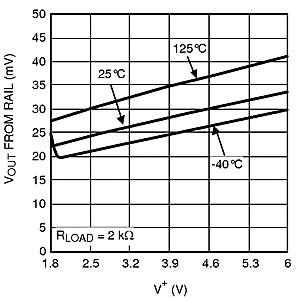 Figure 21. Positive Output Swing vs Supply Voltage
Figure 21. Positive Output Swing vs Supply Voltage
 Figure 23. Positive Output Swing vs Supply Voltage
Figure 23. Positive Output Swing vs Supply Voltage
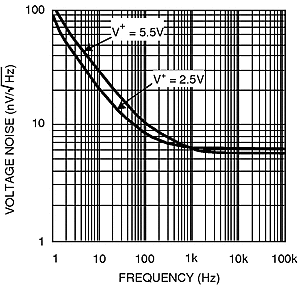 Figure 25. Input Referred Voltage Noise vs Frequency
Figure 25. Input Referred Voltage Noise vs Frequency
 Figure 27. Overshoot and Undershoot vs CLOAD
Figure 27. Overshoot and Undershoot vs CLOAD
 Figure 29. THD+N vs Peak-to-Peak Output Voltage (VOUT)
Figure 29. THD+N vs Peak-to-Peak Output Voltage (VOUT)
 Figure 31. THD+N vs Frequency
Figure 31. THD+N vs Frequency
 Figure 33. Open-Loop Gain and Phase With Resistive Load
Figure 33. Open-Loop Gain and Phase With Resistive Load
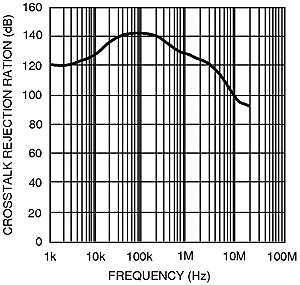 Figure 35. Crosstalk Rejection
Figure 35. Crosstalk Rejection
AV = +1
Figure 37. Large Signal Transient Response
AV = +1
Figure 39. Large Signal Transient Response
 Figure 41. Phase Margin vs Capacitive Load (Stability)
Figure 41. Phase Margin vs Capacitive Load (Stability)
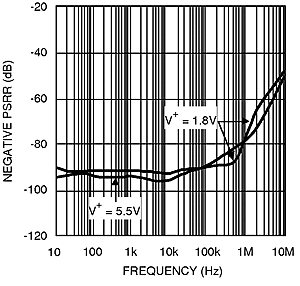 Figure 43. Negative PSRR vs Frequency
Figure 43. Negative PSRR vs Frequency
 Figure 45. Input Common-Mode Capacitance vs VCM
Figure 45. Input Common-Mode Capacitance vs VCM
 Figure 2. Supply Current vs Supply Voltage (LMV792)
Figure 2. Supply Current vs Supply Voltage (LMV792)
 Figure 4. VOS vs VCM
Figure 4. VOS vs VCM
 Figure 6. VOS vs VCM
Figure 6. VOS vs VCM
 Figure 8. Slew Rate vs Supply Voltage
Figure 8. Slew Rate vs Supply Voltage
 Figure 10. Supply Current vs Enable Pin Voltage(LMV791)
Figure 10. Supply Current vs Enable Pin Voltage(LMV791)
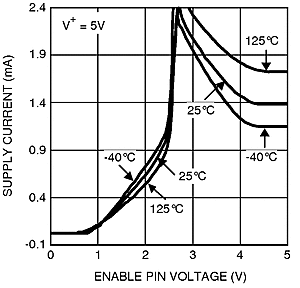 Figure 12. Supply Current vs Enable Pin Voltage (LMV792)
Figure 12. Supply Current vs Enable Pin Voltage (LMV792)
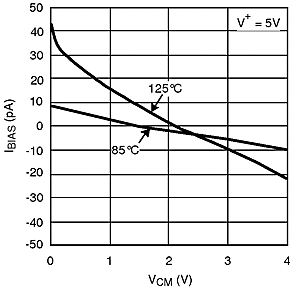 Figure 14. Input Bias Current vs VCM
Figure 14. Input Bias Current vs VCM
 Figure 16. Sinking Current vs Supply Voltage
Figure 16. Sinking Current vs Supply Voltage
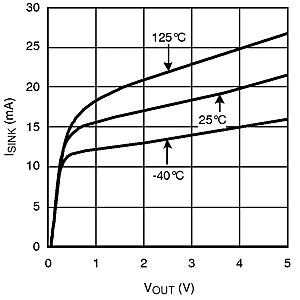 Figure 18. Sinking Current vs Output Voltage
Figure 18. Sinking Current vs Output Voltage
 Figure 20. Negative Output Swing vs Supply Voltage
Figure 20. Negative Output Swing vs Supply Voltage
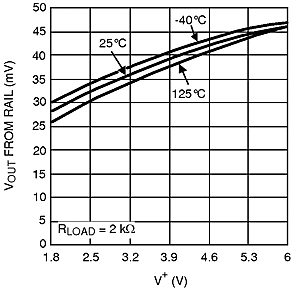 Figure 22. Negative Output Swing vs Supply Voltage
Figure 22. Negative Output Swing vs Supply Voltage
 Figure 24. Negative Output Swing vs Supply Voltage
Figure 24. Negative Output Swing vs Supply Voltage
 Figure 26. Time Domain Voltage Noise
Figure 26. Time Domain Voltage Noise
 Figure 28. THD+N vs Peak-to-Peak Output Voltage (VOUT)
Figure 28. THD+N vs Peak-to-Peak Output Voltage (VOUT)
 Figure 30. THD+N vs Frequency
Figure 30. THD+N vs Frequency
 Figure 32. Open-Loop Gain and Phase With Capacitive Load
Figure 32. Open-Loop Gain and Phase With Capacitive Load
 Figure 34. Closed-Loop Output Impedance vs Frequency
Figure 34. Closed-Loop Output Impedance vs Frequency
AV = +1
Figure 36. Small Signal Transient Response
AV = +1
Figure 38. Small Signal Transient Response
 Figure 40. Phase Margin vs Capacitive Load (Stability)
Figure 40. Phase Margin vs Capacitive Load (Stability)
 Figure 42. Positive PSRR vs Frequency
Figure 42. Positive PSRR vs Frequency
 Figure 44. CMRR vs Frequency
Figure 44. CMRR vs Frequency